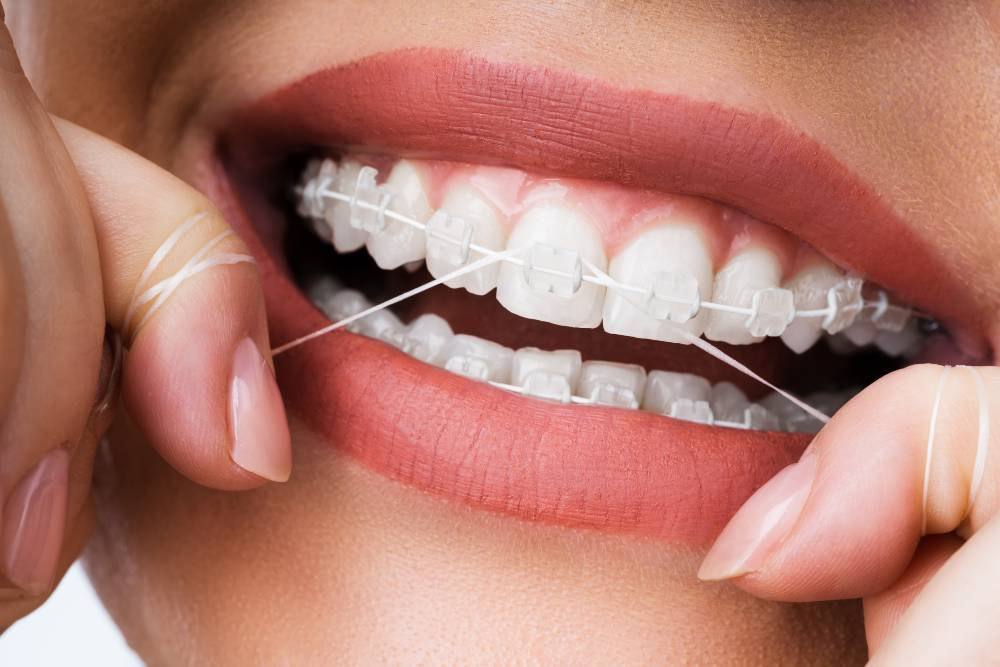Not known Facts About Legacy Orthodontics
Not known Facts About Legacy Orthodontics
Blog Article
Legacy Orthodontics for Beginners
Table of Contents5 Easy Facts About Legacy Orthodontics ShownThe smart Trick of Legacy Orthodontics That Nobody is DiscussingAll About Legacy OrthodonticsThe Ultimate Guide To Legacy OrthodonticsThe Buzz on Legacy Orthodontics
In addition, we provide adjustable treatment schedules, adaptable payment choices and a fun, delightful experience.An orthodontist is a dental expert educated to diagnose, prevent, and treat teeth and jaw irregularities. Orthodontists work with individuals of all ages, from youngsters to adults.
Malocclusion, or misaligned teeth, can bring about oral problems, consisting of tooth degeneration, periodontal disease, and challenging or uncomfortable eating. Not every person is born with straight teeth. If you have a bad bite or huge areas in between your teeth, you might wish to get in touch with a dental practitioner specializing in orthodontic treatment.
Legacy Orthodontics Can Be Fun For Everyone
( Photo Credit History: DigitalVision/Getty Images) Orthodontists make use of taken care of and removable oral tools, like braces, retainers, and bands, to transform the placement of teeth in your mouth. Orthodontic treatment is for oral irregularities, including: Jagged teethBite problems, like an overbite or an underbiteCrowded teeth or teeth that are also far apartJaw misalignmentThe objective of orthodontic treatment is to boost your bite.
A healthy and balanced bite ensures you can consume, chew, and speak effectively. While you might think about orthodontists as mainly for children or teens who need braces, they can remedy dental issues at any type of age. Orthodontists go to university, dental institution, and orthodontic institution. After graduation, they spend 2 or 3 years in an orthodontic residency program.
All orthodontists are dental practitioners, but not all dental experts are orthodontists. Orthodontic residency programs provide intensive, focused direction for dental specialists. They concentrate on 2 locations: How to effectively and safely move teeth Exactly how to effectively lead advancement in the teeth, jaw, and faceOnce an orthodontist has completed training, they have the option to become board accredited.
The Single Strategy To Use For Legacy Orthodontics
Malocclusion leads to tooth overcrowding, a twisted jaw, or uneven bite patterns. Malocclusion is usually treated with: Your orthodontist connects steel, ceramic, or plastic square bonds to your teeth.
If you have only small malocclusion, you may be able to make use of clear dental braces, called aligners, as opposed to typical dental braces (https://www.ted.com/profiles/47882171). Some people need a headgear to help move teeth into line with pressure from outside the mouth. After braces or aligners, you'll require to wear a retainer. A retainer is a personalized gadget that maintains your teeth in place.
They can produce additional area in the mouth without having to pull teeth. Orthodontists make use of wires, medical screws, or plates to her latest blog sustain your jaw bone.
You may need to see an orthodontist if you have: Crowding or not enough room for all of your teethOverbite, when your top teeth come over your base teethUnderbite, when your base teeth are too much forwardSpacing or problems with gapsCrossbite, which is when your upper teeth fit behind your bottom teeth when your mouth is closedOpen bite or an upright space in between your front base and upper teethMisplaced midline, when the center of your bottom and upper teeth do not align Correcting a dental malocclusion can: Make biting, chewing, and talking easierImprove the proportion of our face and your general appearanceEase discomfort from temporomandibular joint conditionsDifferent your teeth and make them much easier to clean, helping prevent dental cavity or tooth cavities It's usually a dental practitioner that initially notifications misaligned teeth throughout a regular exam.
Indicators on Legacy Orthodontics You Should Know

Throughout your first orthodontic consultation, you'll likely have: An oral examPhotos taken of your face and smileDental X-raysPanoramic (360 level) X-rays of your face and headImpressions to develop mold and mildews of your teethThese tests will help your orthodontist understand how to proceed with your treatment. leesburg clear braces. An orthodontist is a dental expert that's had training to treat your teeth and jaw
Orthodontists may perform surgical treatment, exams,X-rays,and more to aid you acquire an extra comfortable, much healthier smile. An orthodontist is concentrated on your bite, so something like a damaged tooth would be handled by a dentist. Orthodontists are dental practitioners but not all dental practitioners are orthodontists. Orthodontists are focused on your bite, or the means your teeth fit with each other, and the straightness of your teeth.
Ever before questioned how celebs always seem to have completely straightened teeth? The answer frequently hinges on the proficient hands of an orthodontist. Yet just what does an orthodontist do? Orthodontists are dental professionals who concentrate on fixing abnormalities in the teeth and jaws. Their competence surpasses just producing a lovely smile; it includes enhancing your general oral health and feature.
Fascination About Legacy Orthodontics

While dental braces are one of the most generally recognized orthodontic therapy, orthodontists have a diverse toolkit at their disposal. The particular technique picked relies on the seriousness of the case, the patient's age, and specific choices. These tried-and-true dental braces make use of a system of braces adhered to the teeth and attached by cords.
Clear aligners, like Invisalign, are a prominent alternative for individuals seeking a much more very discreet treatment alternative. These removable trays are custom-made to progressively shift the teeth's position. Headgear may be made use of in conjunction with braces or aligners to apply extra targeted pressures, particularly for correcting jaw disparities. In instances of slim jaws, palatal expanders can be utilized to produce space for proper tooth positioning.
Report this page